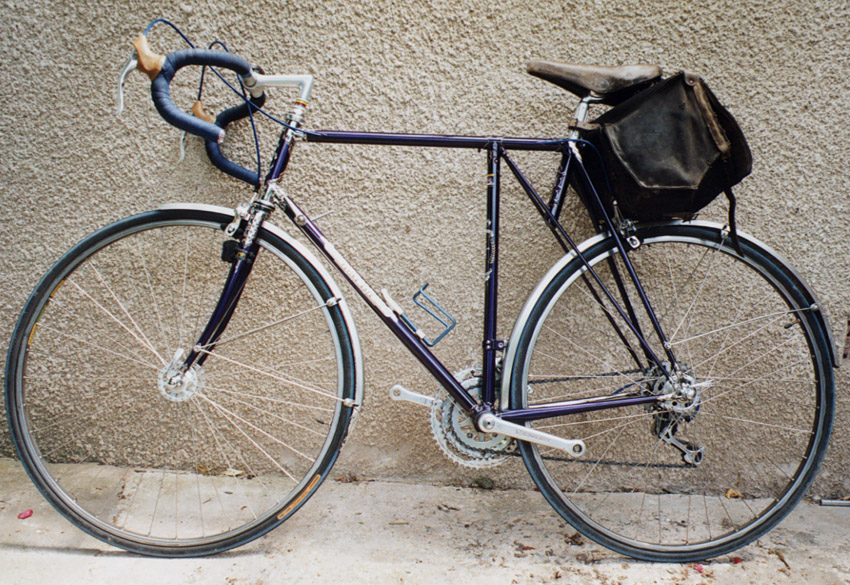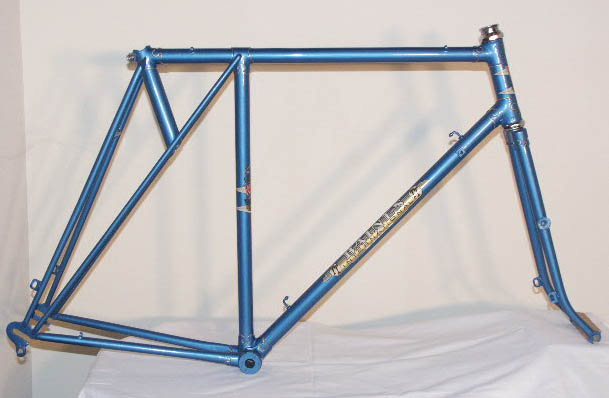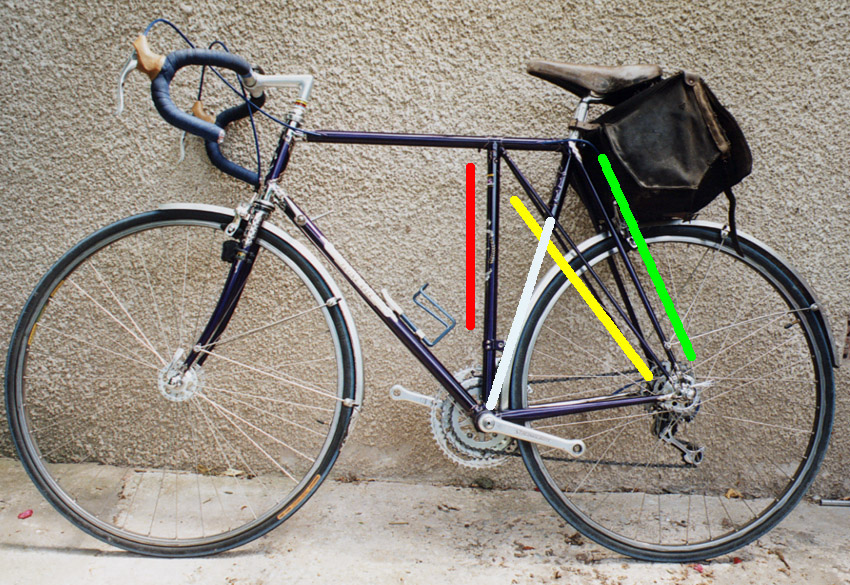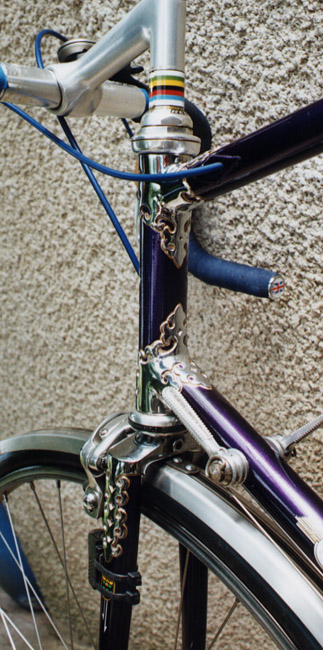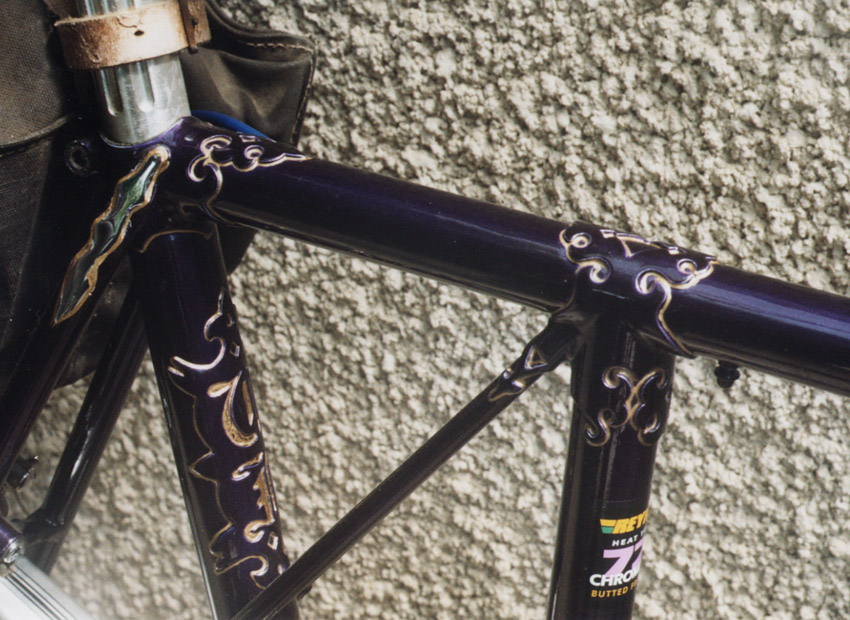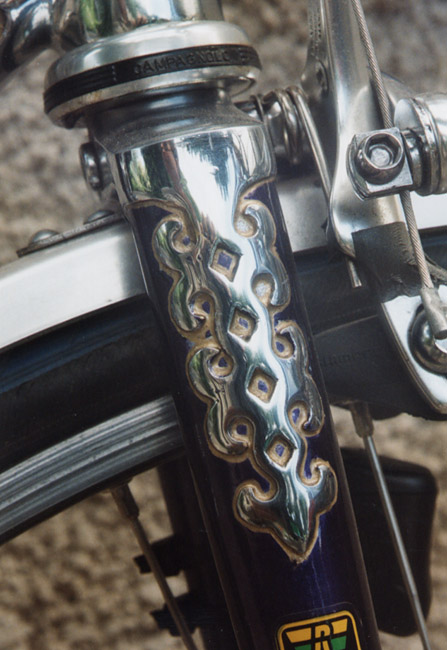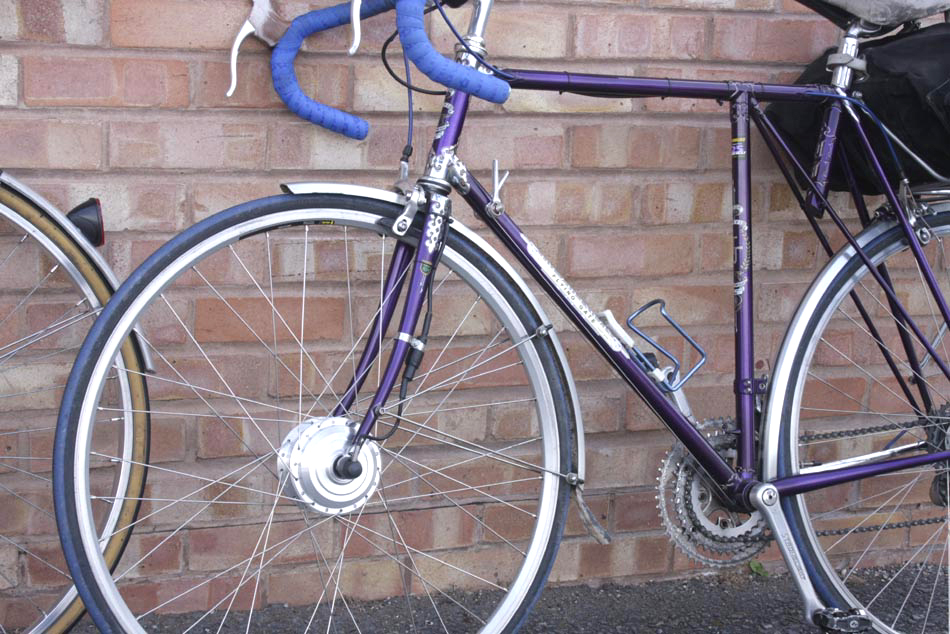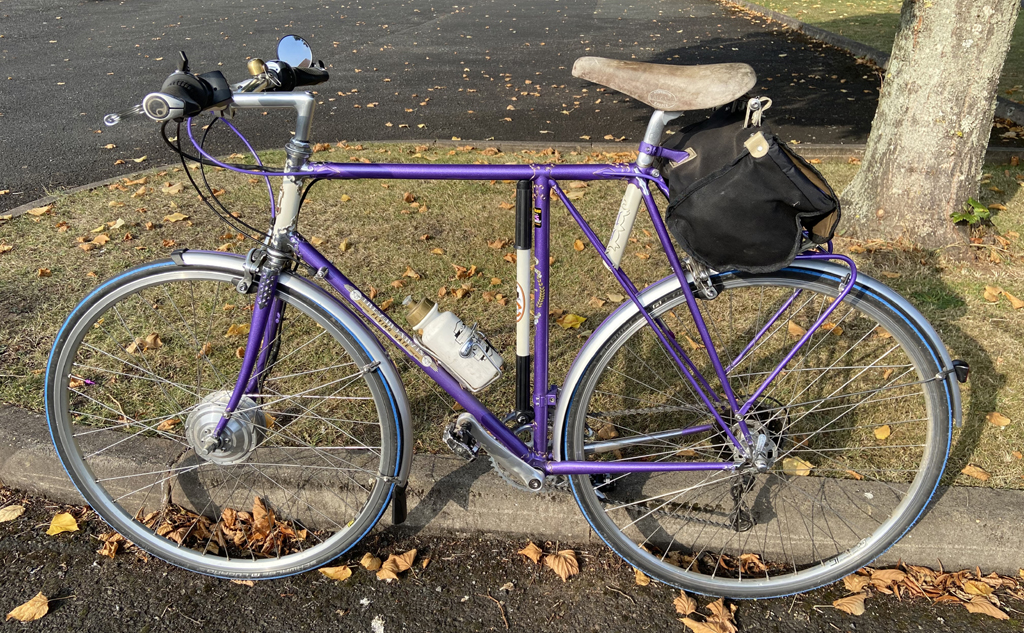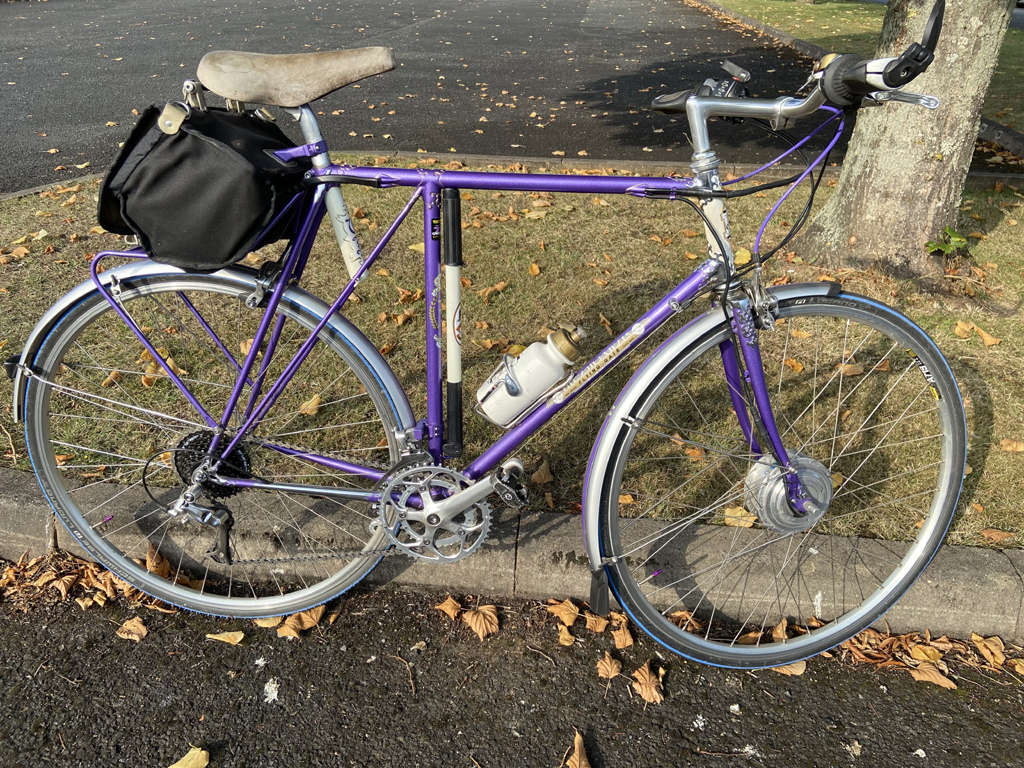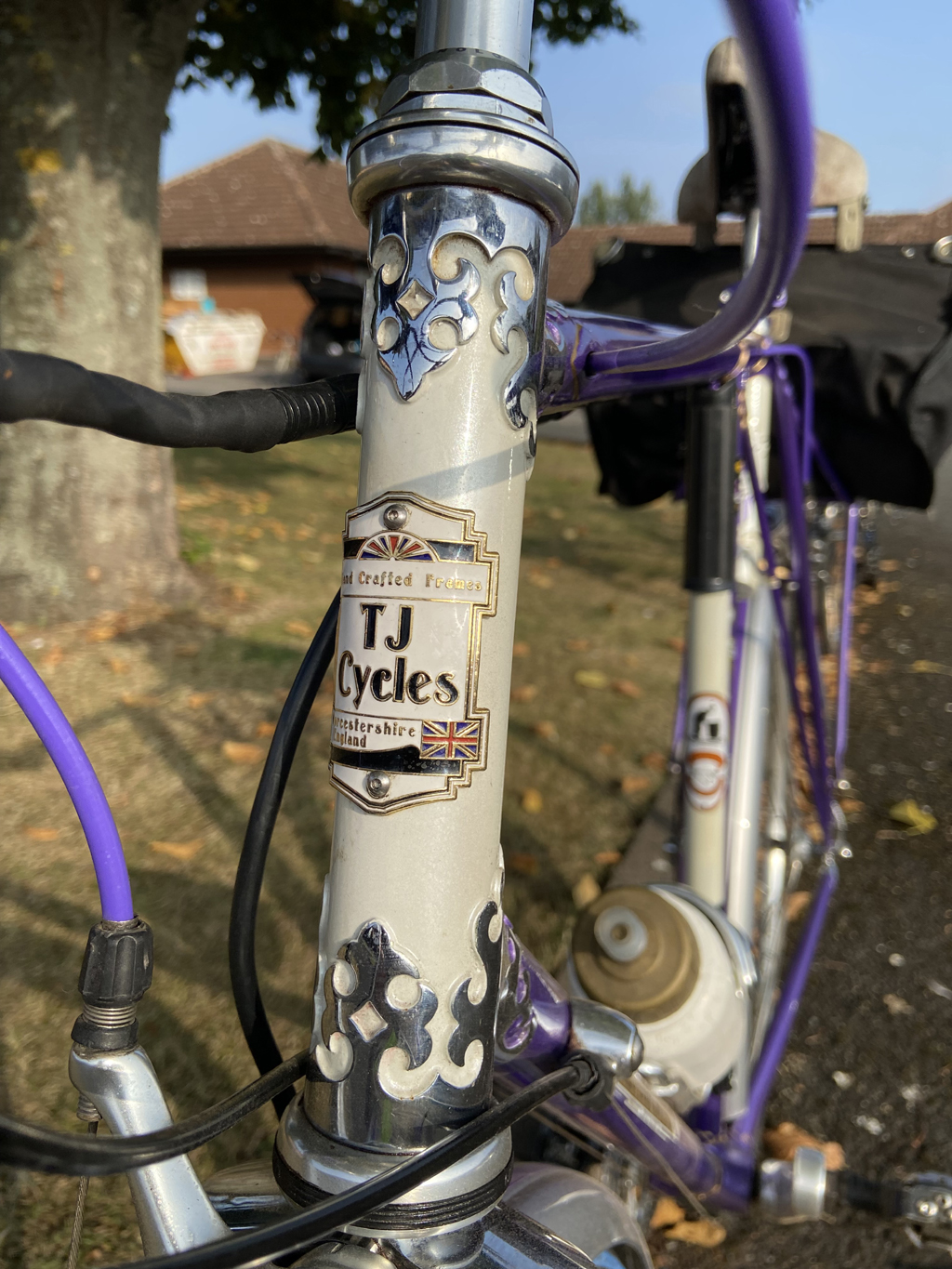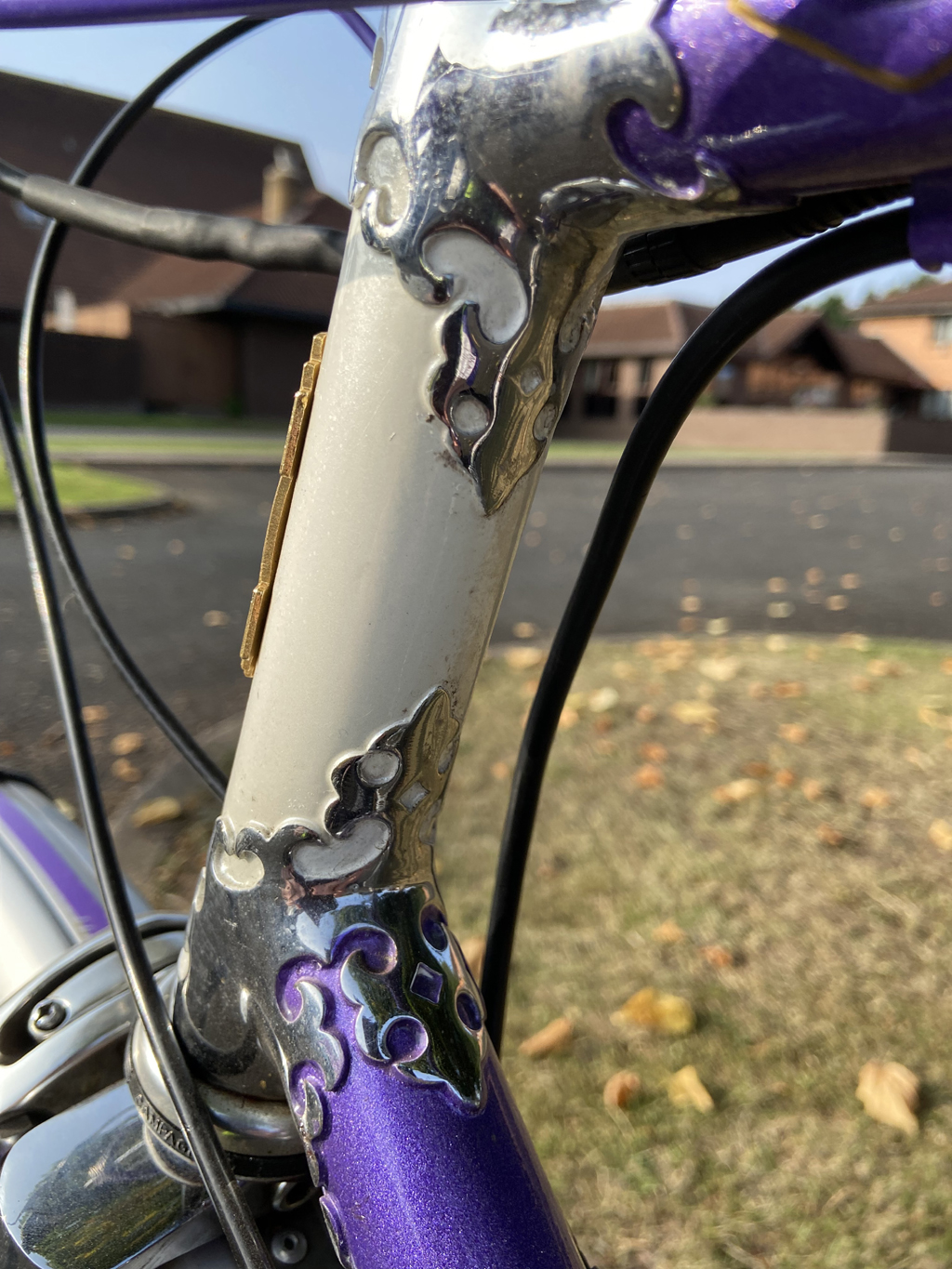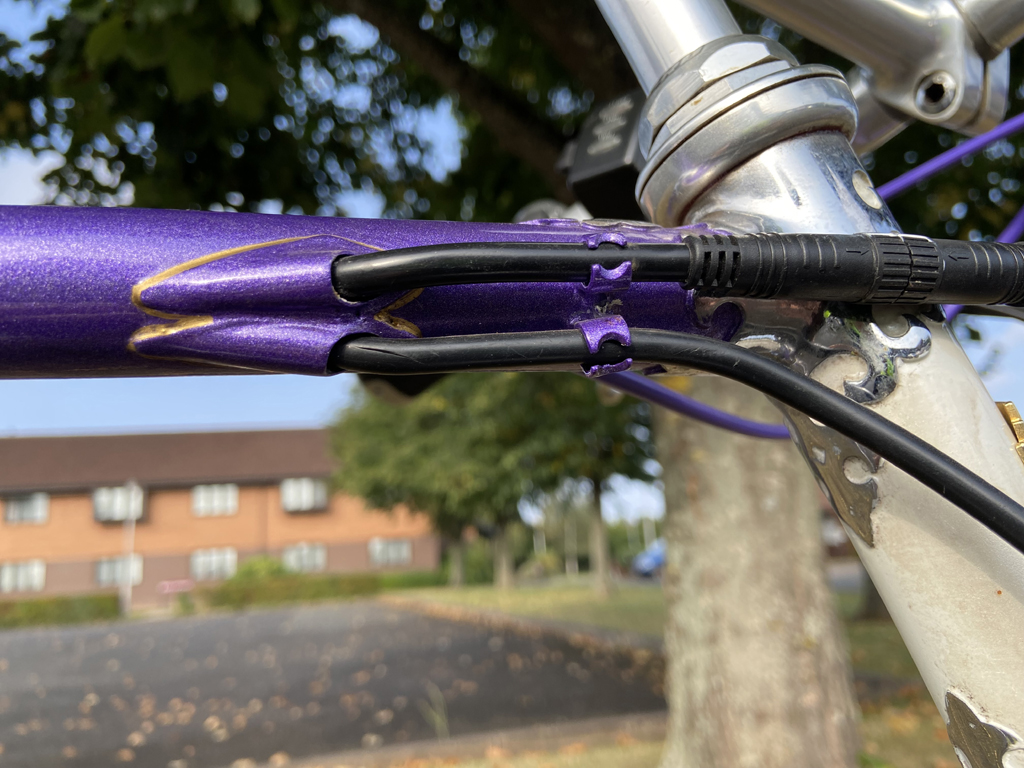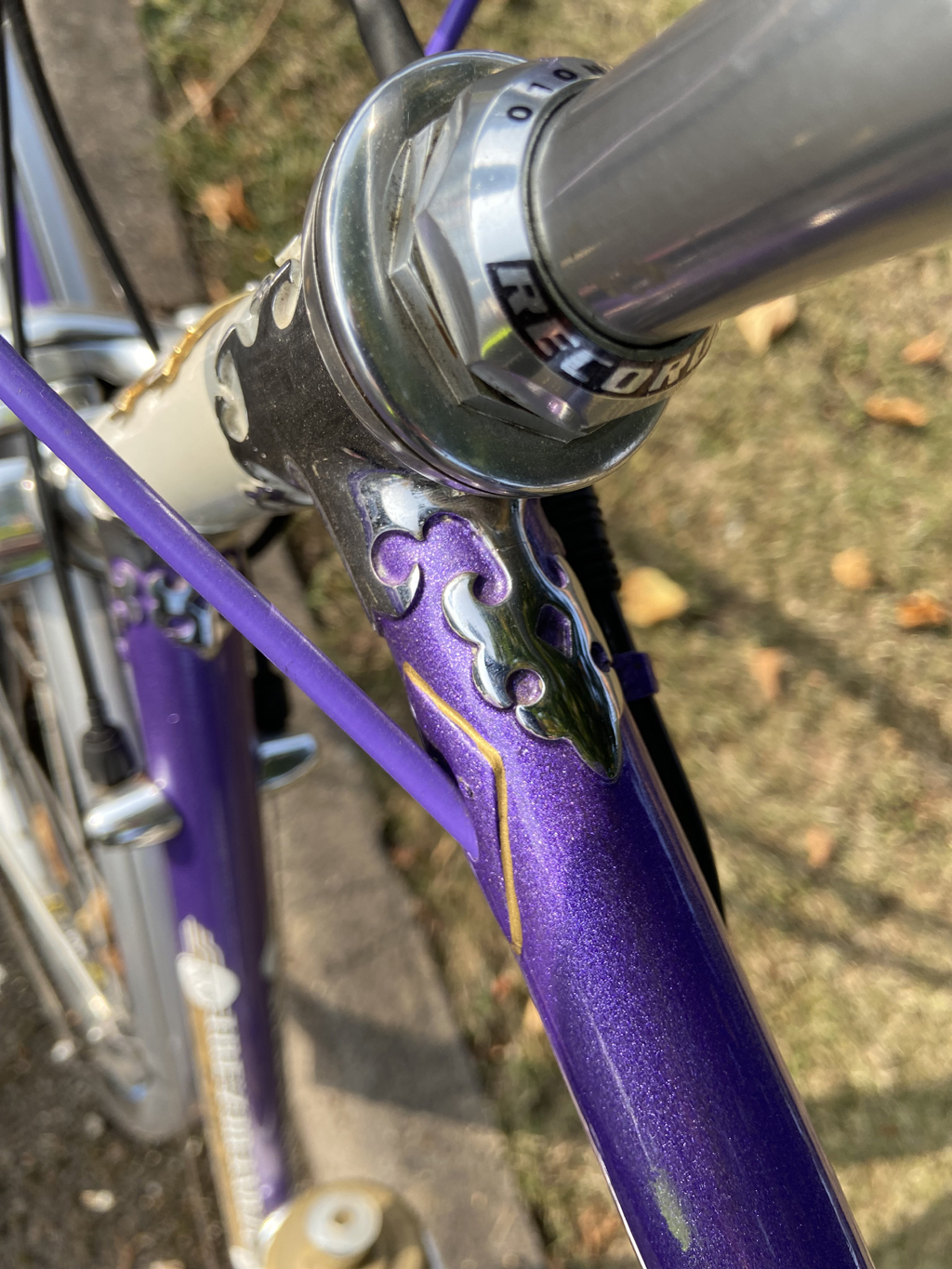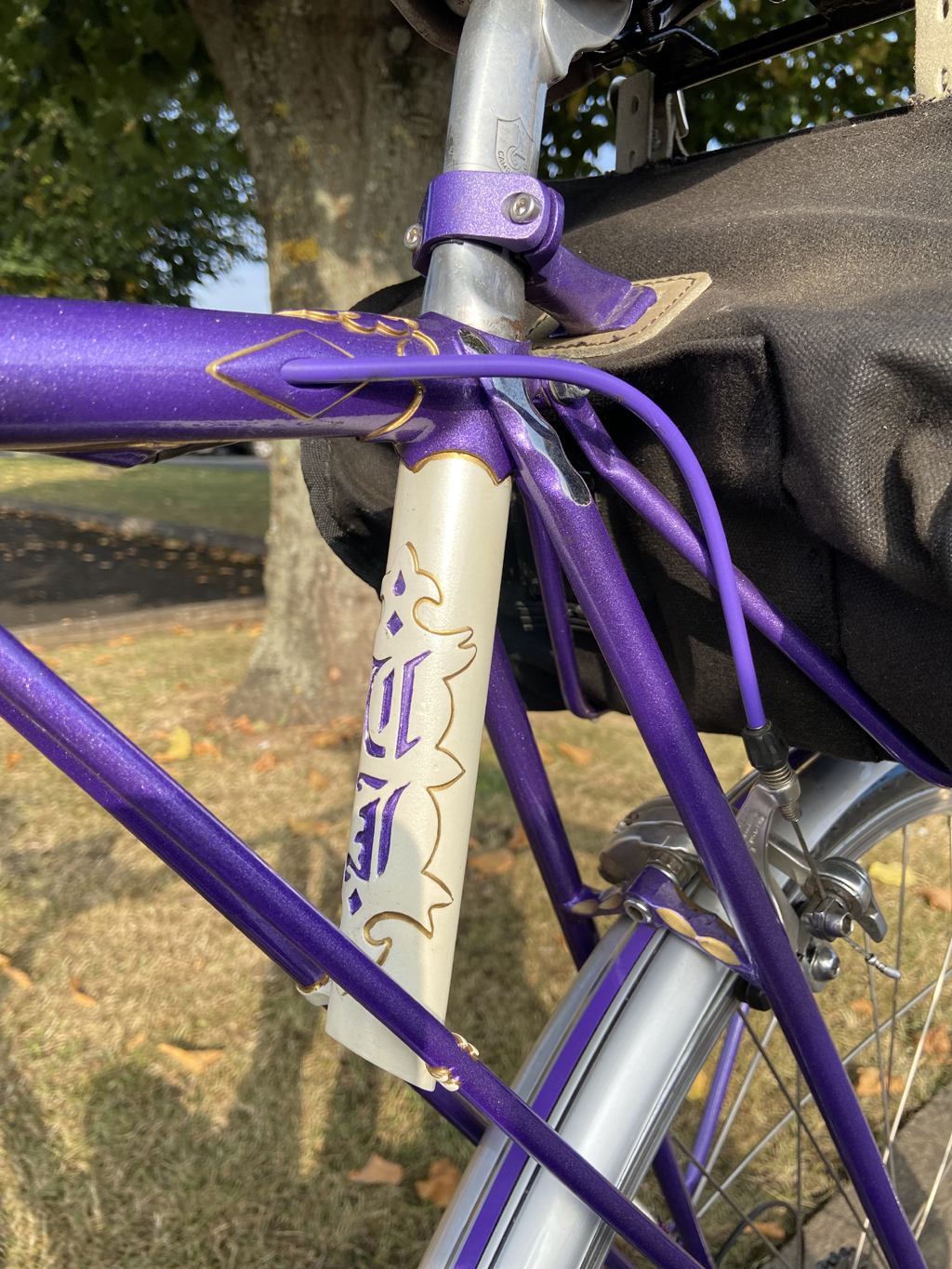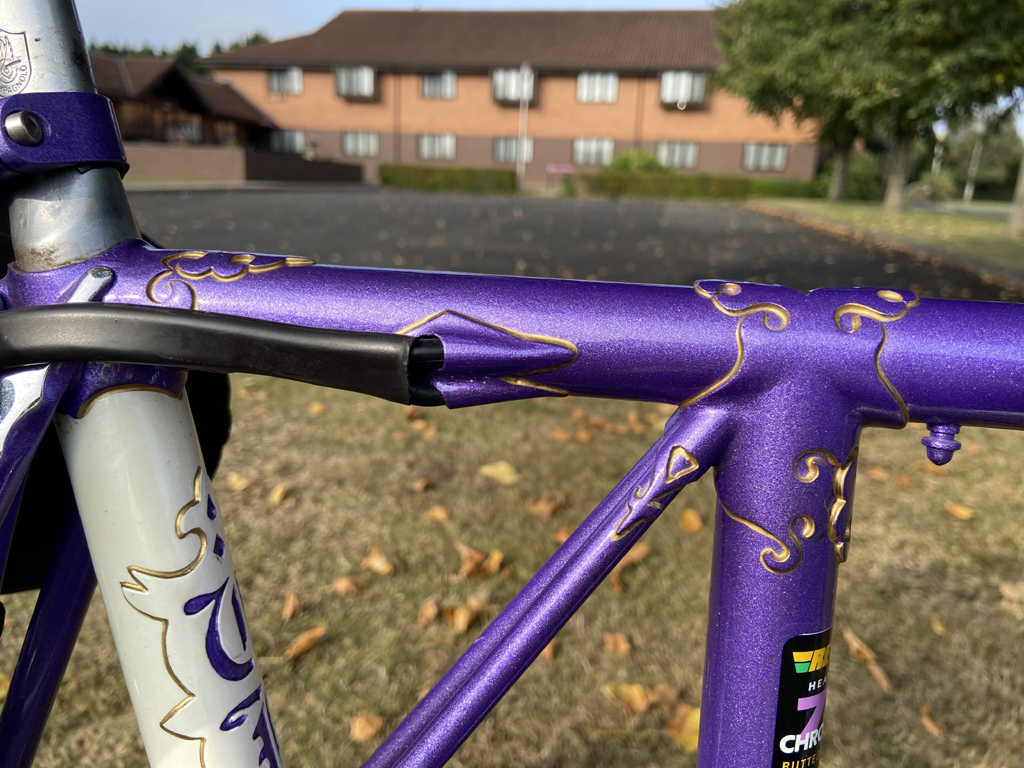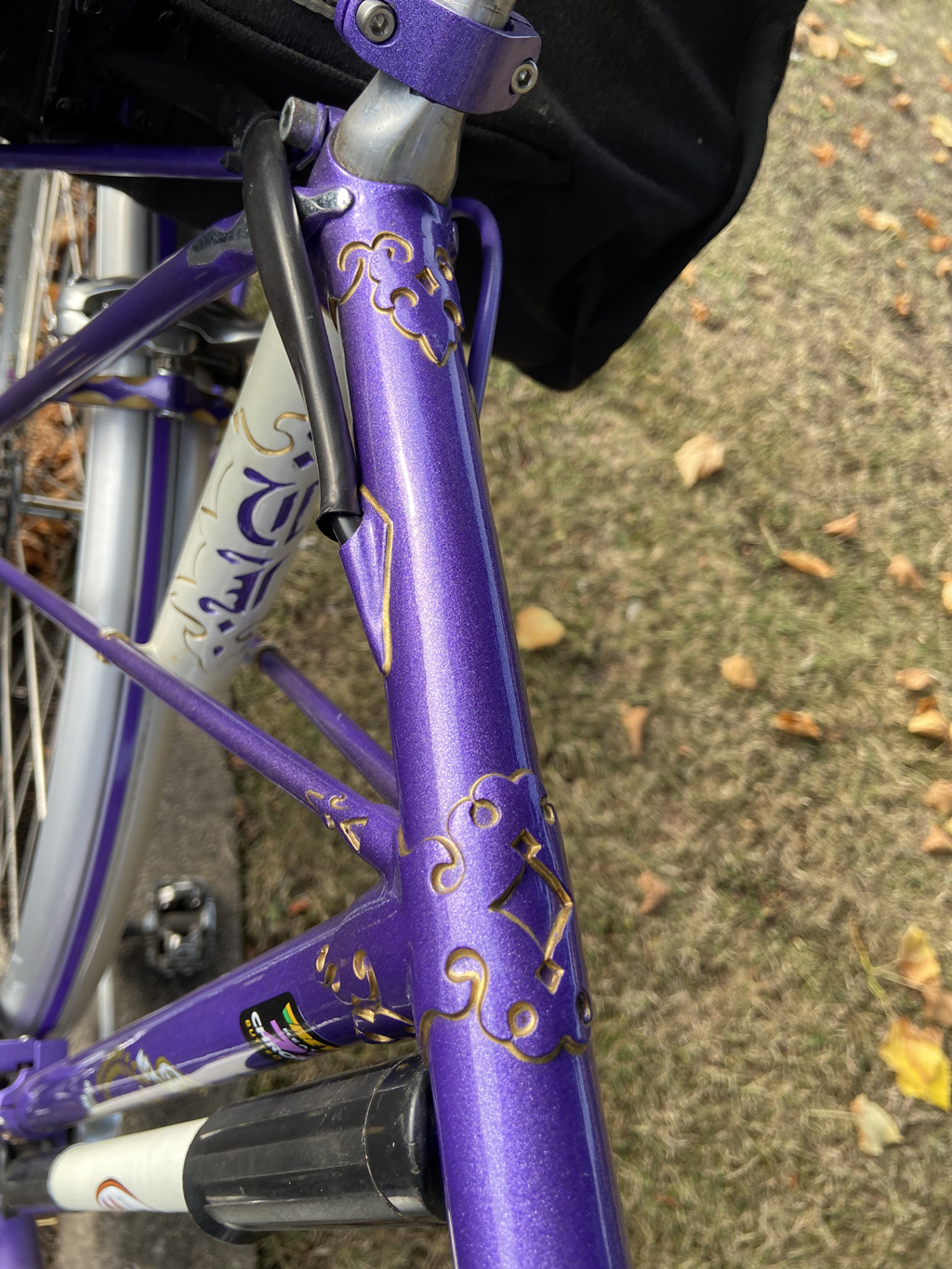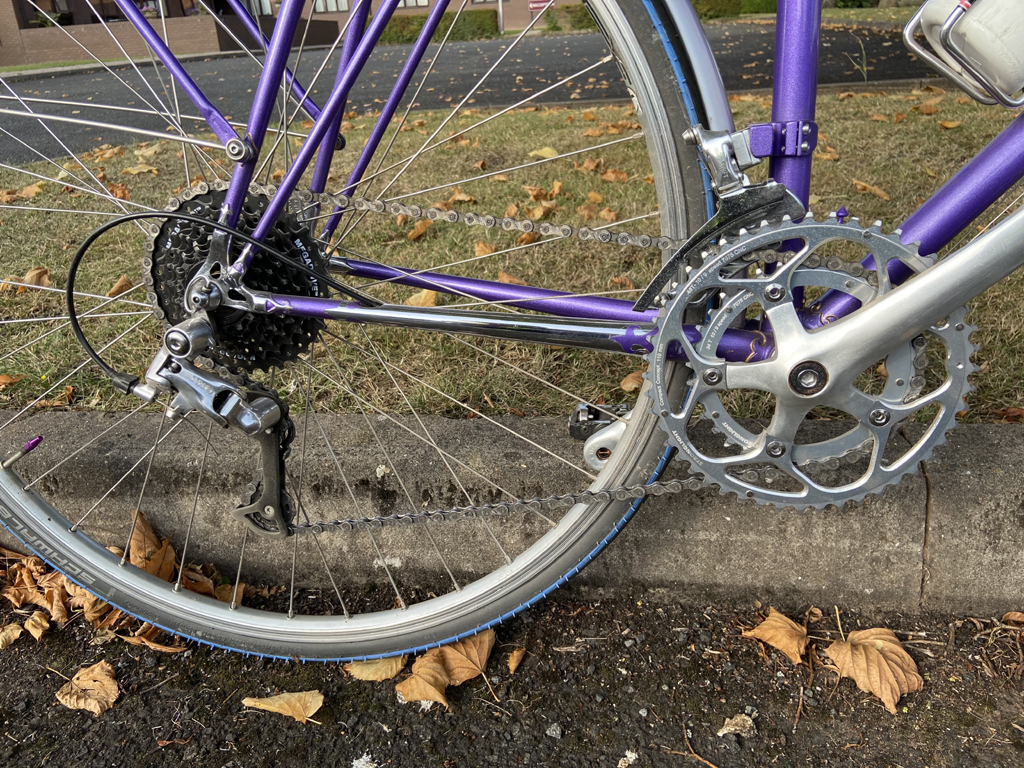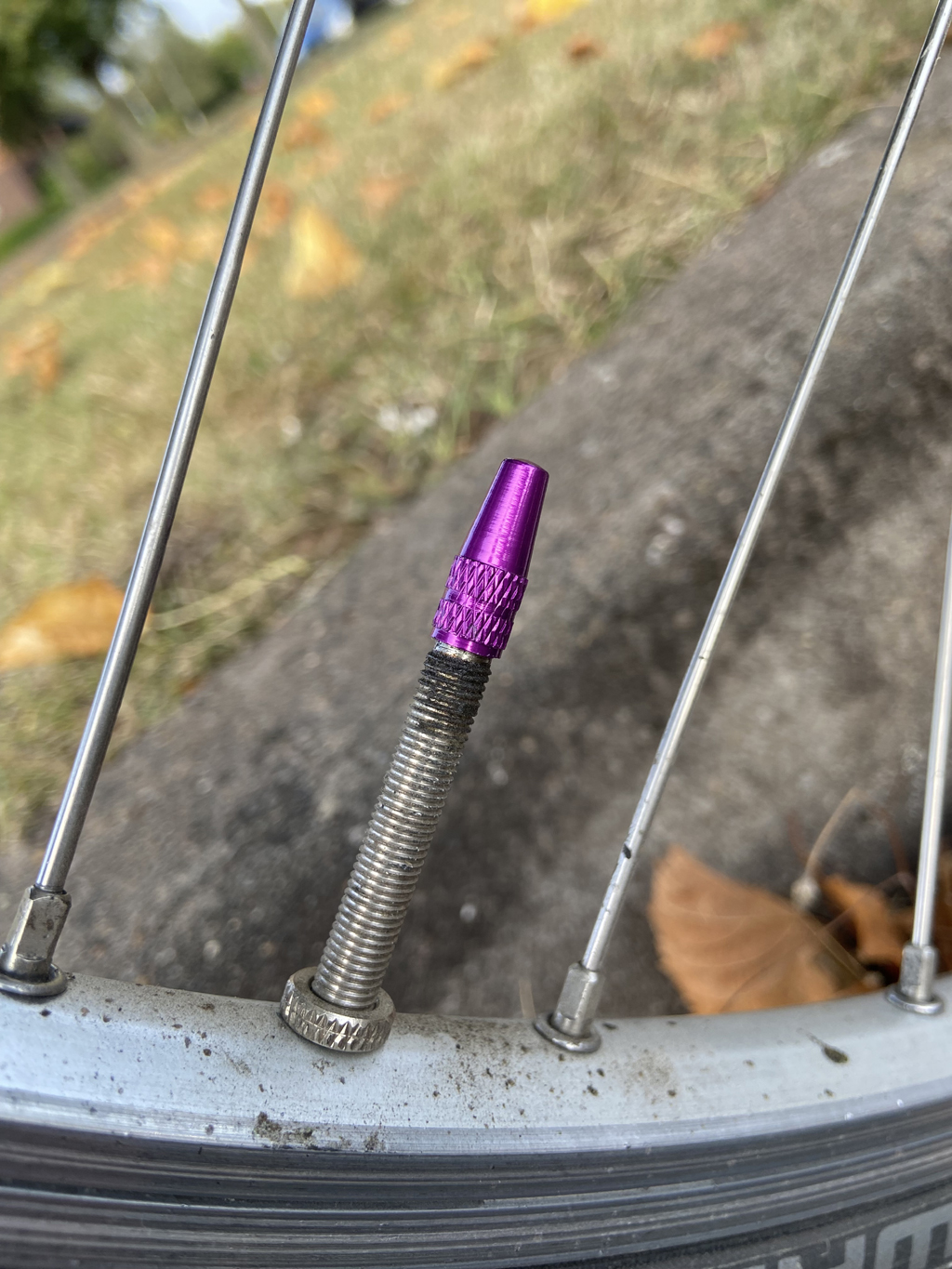I met Trevor Jarvis at his home/workshop in July 2003 and spent most of an afternoon talking with him. He was most kind and showed me his workshop and told me a bit about his operation. The following information is condensed from a typed sheet he gave me outlining the history of how he came to make Flying Gates.
Trevor had a small engineering business. In February 1979, he decided to expand his operation to include bicycle frame manufacture, and T.J. Cycles was born. Trevor has been an avid Hetchins owner since he was 17 (he has a curly Experto), and had also ridden a Baines with the peculiar rear end known as the Baines Gate design. Trevor decided that, if he were to make a success of cycle frame building, he would have to offer something out of the ordinary, since the market was already dominated by dozens of frame builders making conventional designs. The curly Hetchins was still being produced, of course, but the Gate design had fallen into disuse since the closure of the Baines Bros. business in 1956. Trevor had been impressed with the ride and responsiveness of the Baines Gate and decided that he would try to revive the design. He found the remaining Mr. Baines (originally, the firm had been founded by two brothers) and secured the rights to the design. Trevor then registered the design under the name 'Flying Gate.' It is no small tribute to Trevor's enterprise that a good many people now refer to the original Baines machines as Flying Gates, although that is not strictly correct. The original ones were Baines Gates. Below: an original Baines (foto courtesy of Phil Petrick).
|
The design dates from 1936 (coincidentally, the same year the patent was granted on the Hetchins curly stays). The idea behind the vertical tube is to bring the rear wheel closer to the bottom bracket, shorten the chain stays, and thus stiffen the rear end. (A number of frame builders tried other designs to achieve the same result: Hetchins experimented with fluted seat tubes and 'S' curved seat tubes, for example; the Paris frame also featured a near-upright seat tube.) Trevor claims that the additional struts at the rear further tighten up the triangle, giving a very responsive ride. Also, because the vertical tube is independent of the seat lug, the top tube can be cut to virtually any length to suit the individual rider, without changing the rest of the frame geometry.
In addition to the Gate geometry, Trevor also offers a range of hand-cut lugs.
For the benefit of those not familiar with Gate geometry and terminology, please refer to the foto below:
the red line runs along the vertical tube;
the green line runs along the seat stay;
the yellow line indicates the struts. The seat tube is the stubby one supporting the seat post; the white line shows where the seat tube would have crossed the tire, had it been extended as on a conventional frame. You get a good idea how much shorter the chain stays are by observing the steepness of the seat stays (green line).
|
